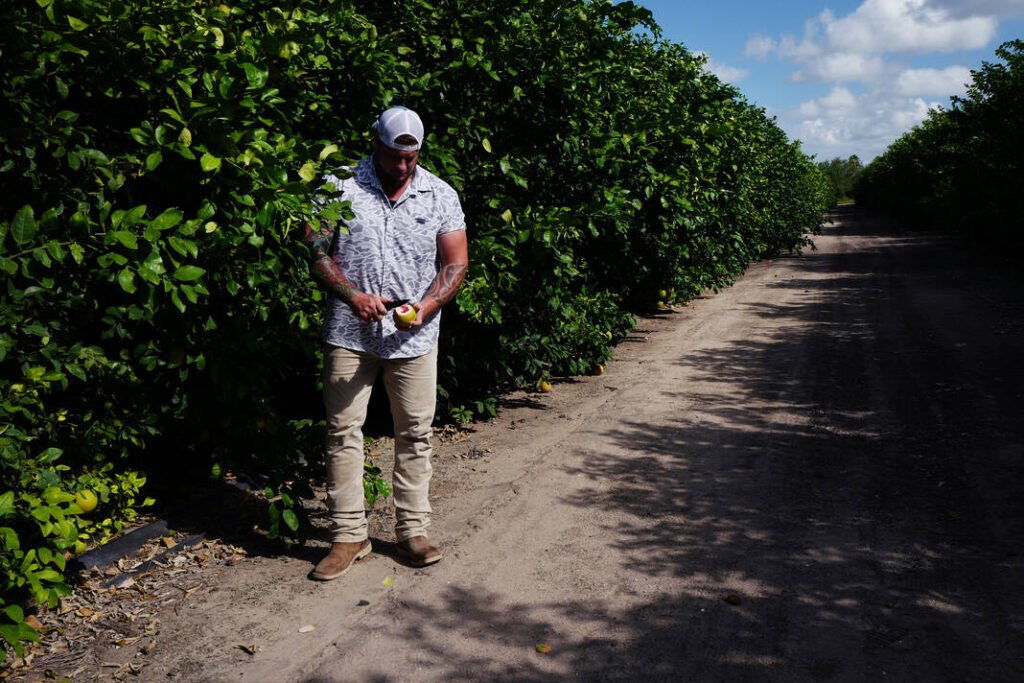Innovations in Texas Citrus Farming: Battling Challenges with New Methods
Texas citrus farmers face numerous obstacles, including pests, diseases, and drought. However, researchers at Texas A&M University have developed an innovative solution that could transform the industry. This article delves into their breakthrough techniques and how they are positively impacting Texas’s citrus growers.
The Threat of Diaprepes Root Weevil
One of the most pressing issues confronting Texas citrus is the Diaprepes root weevil. This destructive insect is known to wreak havoc on citrus trees, particularly in the Rio Grande Valley areas like Bayview. Dr. Mamoudou Setamou and Dr. Olufemi Alabi from Texas A&M University have been at the forefront of addressing this dilemma since 2013. The Diaprepes’ life cycle involves larvae that feed on a tree’s root systems, compromising its ability to absorb moisture and nutrients.
Understanding the Weevil’s Lifecycle
The lifecycle of the Diaprepes is alarming. Adult weevils lay their eggs on the foliage, and once hatched, larvae fall to the ground and burrow into the soil. They damage the tree’s hair-like roots, leading to a decline in tree health and ultimately its demise.
Ground Cover: An Innovative Approach
In their fight against the Diaprepes root weevil, Setamou and Alabi experimented with laying black plastic mesh on the ground. This innovative method not only disrupts the weevil’s life cycle but also facilitates a healthier environment for the trees:
- Barrier Method: The black plastic mesh prevents larvae from burrowing into the ground and stops adults from climbing the trees.
Results of the New Method
The efficacy of the plastic ground cover became evident when trees that had been retrofitted with it not only recovered from initial weevil damage but also thrived, leading the researchers to implement this technique in the planting of new trees. According to Alabi, there’s a stark contrast between trees cultivated using this method and those planted traditionally. Within just one or two years, trees grown with the innovative system demonstrated enhanced growth and foliage.
Water Efficiency: A Game Changer
Another unexpected benefit of the ground cover system is its role in water conservation. Traditional flood irrigation often resulted in overwatering, causing harm to the roots. However, through employing this new method, researchers discovered that citrus growers could save 30-40% of water.
Recommended Irrigation Techniques
Farmers are encouraged to use micro-sprinklers or pressurized drip systems as part of this planting method:
- Drip Irrigation: More efficient than flood irrigation, this approach allows precise control over water and nutrient delivery.
Glen Martin, grove care manager for Lone Star Citrus Growers, emphasized the importance of this shift, stating that the new irrigation techniques not only save water but also speed up the time it takes to bring citrus trees to market.
Enhancing Tree Health Against Citrus Greening
One major advantage of the barrier method is that it supports tree health, which is crucial in combating citrus greening. This pervasive disease, spread by the Asian citrus psyllid, has severely affected citrus industries, particularly in Florida.
The Impact of Tree Health
Healthy trees are better equipped to resist diseases like greening. Setamou pointed out that trees planted with the new system are more vigorous, enabling them to regenerate root growth and maintain nutrient uptake, even if they encounter greening.
Adoption of the New System by Growers
The new system has gained traction among Valley citrus growers, with nearly 5,000 acres already utilizing the method. According to Setamou, this innovation is paving the way for the future of the Texas citrus industry. Other regions, including Florida, Spain, and Morocco, are also looking into this straightforward yet impactful approach.
Community Support and Acknowledgments
Valley citrus grower Dale Murden remarked on the effectiveness of the new barrier method, highlighting its benefits, such as reduced pesticide use and improved tree health. He noted that the industry is in dire need of effective solutions to combat various challenges, from natural disasters to climate change.
As new citrus farming techniques take hold, the innovative practices developed by Dr. Setamou and Dr. Alabi stand as a beacon of hope for Texas citrus farmers.
Learn More
For further insights and visual representation of these innovative methods, you can view the informative video titled "Citrus Growers Endorse New Texas A&M Tree Planting Method" available on YouTube.
In conclusion, the integration of the barrier method into Texas citrus cultivation not only tackles immediate challenges from pests and water scarcity but also enhances overall tree health, positioning the industry for a sustainable future. As growers adapt to these approaches, they are fostering resilience in an endurance race against environmental and agricultural challenges.


